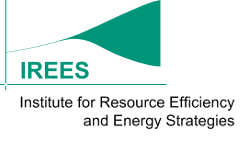FORECAST/eLOAD
-
07.08.2020 Industrial excess heat for district heating: Database shows great potential for supplying households
Excess heat from energy-intensive industries is often suitable for use in district heating systems but is usually unutilized. A detailed overview of the potentials available in the EU is now provided by a database of the sEEnergies project. In Germany, 29 petajoules of excess heat from industrial sites could be used, which corresponds to the demand of more than half a million households. The information is available as maps and downloadable datasets.
News
-
07.08.2020 Industrial excess heat for district heating: Database shows great potential for supplying households

Excess heat from energy-intensive industries is often suitable for use in district heating systems but is usually unutilized. A detailed overview of the potentials available in the EU is now provided by a database of the sEEnergies project. In Germany, 29 petajoules of excess heat from industrial sites could be used, which corresponds to the demand of more than half a million households. The information is available as maps and downloadable datasets.
-
07.08.2020 Final conference of the H2020 Hotmaps project presents an open data toolbox

“Heating and cooling planning for greener cities: local resources first” was the topic of the final conference of the Hotmaps project. The event took place entirely online and included different plenary and parallel sessions. Around 70 people remained online all the time.
-
08.07.2020 FORECAST applied to countries in transition: A case study of Brazil by region

Together with modelers from the Pontifical Catholic University of Rio de Janeiro, the FORECAST modeling team analyzed the long-term impact of energy efficiency policies on electricity consumption in Brazil’s residential sector.
-
02.08.2019 Final Workshop of the BMWi-funded Research Project "AVerS"

The final workshop of the BMWi-funded research project "AVerS" took place on 8 July 2019 in Stuttgart. In the project, dealing with the topic of security of supply in Southern Germany, Fraunhofer ISI provided in-depth electricity demand scenarios and demand response potentials with a high temporal and spatial resolution.
-
17.05.2019 LamA: analysis of impacts of electric vehicles on the electricity system

In the project, charging infrastructure for electric vehicles will be installed at 38 Fraunhofer institutes. Fraunhofer ISI evaluates effects of the infrastructure build-up.
-
22.03.2019 New FORECAST scenarios show: Deep decarbonization of industry is possible with innovations

On behalf of the EU Commission, the Fraunhofer Institute for Systems and Innovation Research ISI together with ICF Consulting Services Limited explored the contribution that individual technologies can make to decarbonizing industry and the possible paths that lead to this by 2050.
-
05.12.2018 Webinar presented scenarios for deep decarbonisation of the EU industry based on the model FORECAST - recording available

In this webinar jointly organised by Fraunhofer ISI (Germany) and Association negaWatt (France) in the frame of the Climate Recon project, we explored the role of breakthrough innovations and systemic change for the decarbonisation of the EU's industry sector.
-
06.11.2018 The FORECAST model is being used for the medium-term forecast of the EEG surcharge in a study for the German TSOs

Medium-term forecast: Study identifies falling demand for electricity, and rising electricity self-consumption
-
10.08.2018 New paper published: A methodology for bottom-up modelling of energy transitions in the industry sector - the FORECAST model

In a new publication we describe the latest version of the industry sector model of FORECAST focusing on the ability and need to model the energy transition in industry.
-
12.06.2018 Presentation of the project results on the "Decarbonization of the energy system through the increased use of renewable electricity in demand sectors and its effects on the security of supply"

In the context of an energy system analysis of Germany and its neighboring countries, the scenario results of FORECAST and eLOAD were presented at the Ministry of the Environment, Climate Protection and the Energy Sector Baden-Württemberg on 04.06.2018 in Stuttgart.
© 2024 Fraunhofer ISI | Publishing Notes | Data Protection


